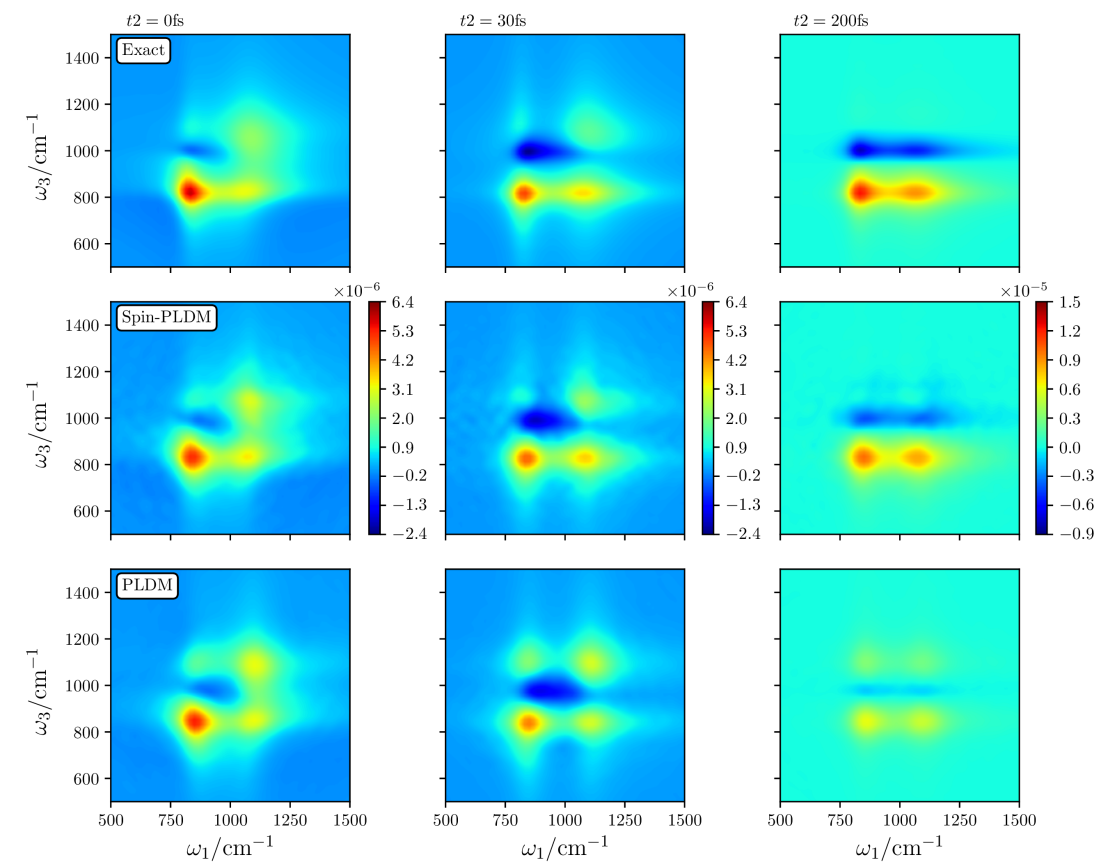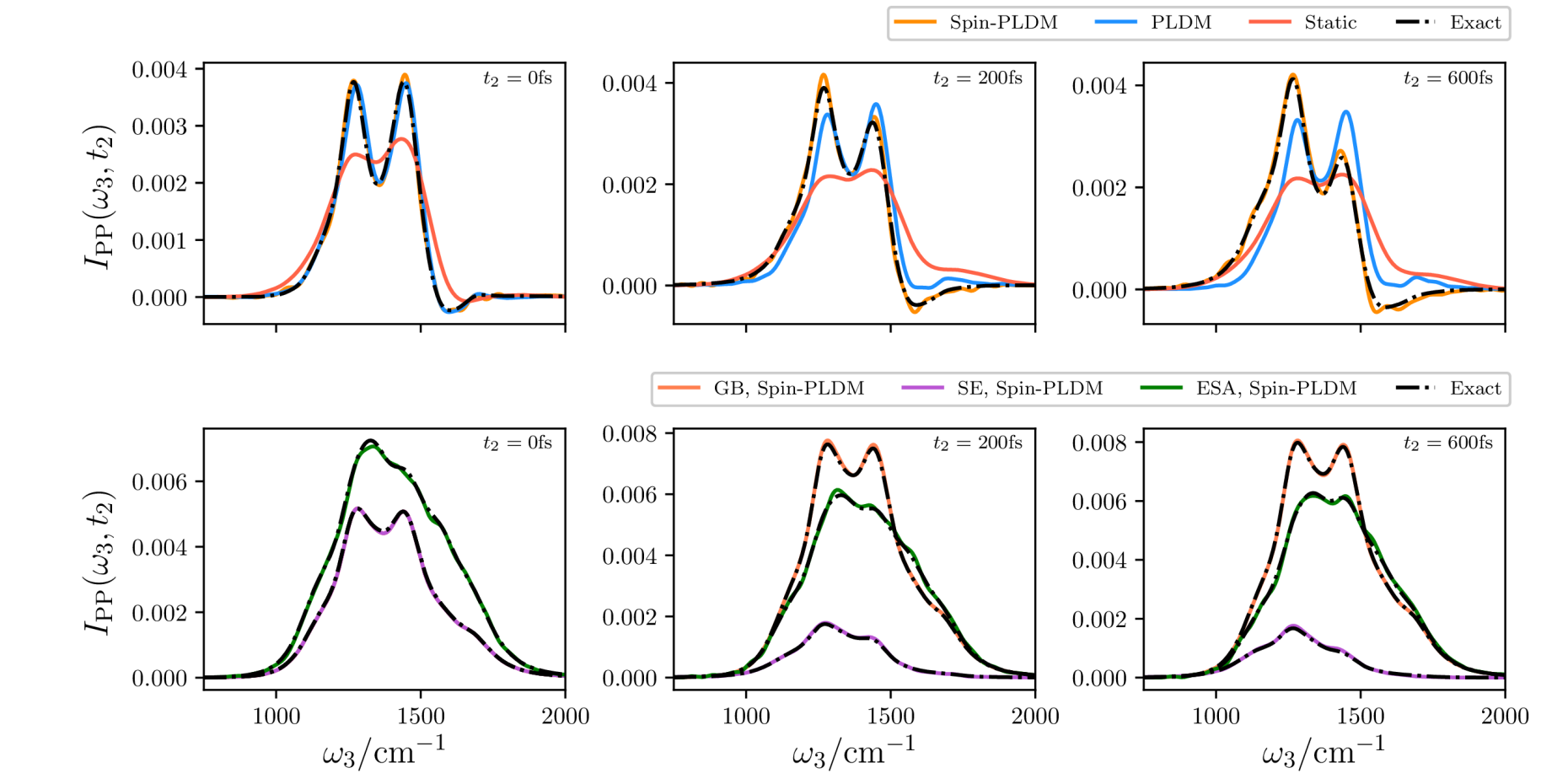New paper shows how to compute nonlinear optical spectra with classical trajectories

In this paper, we demonstrate how spin-PLDM can be used to accurately obtain electronic nonlinear spectra for large condensed phase systems. Spin-PLDM has several advantages over other classical trajectory based approaches for this task. Because partially linearized approaches treat the electronic dynamics associated with each propagator using a separate set of mapping variables, the method is better able to describe the dynamical electronic coherences generated by spectroscopic measurements. Such approaches can also be used to calculate the multi-time correlation functions required for computing nonlinear spectra.
The use of spin-mapping also means that spin-PLDM generally gives rise to more accurate results compared to other partially linearized approaches (like PLDM). This is illustrated in Fig. 1, where spin-PLDM is shown to better reproduce the important features of the 2D optical spectra compared to PLDM. One final advantage of our approach is that the full nonlinear spectrum can be decomposed into it constituent components (such as the ground-state bleaching (GB), stimulated emission (SE) and excited-state absorption (ESA) components of the pump-probe signal (Fig. 2), which allows further insight beyond what can be directly obtained from experiments.

"A partially linearized spin-mapping approach for simulating nonlinear optical spectra", J. Chem. Phys. 156, 024108 (2022)Jonathan R. Mannouch and Jeremy O. Richardson